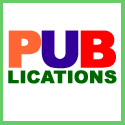A Guide to Publications

Articles
About
NFIA
Heroin Use Claiming Lives in Bay Area
Tampa
Tribune
July 5, 1997
SUMMARY: The "heroin chic" fashion trend may be over, but the addiction remains strong for young addicts in Hillsborough and Pinellas counties.
TAMPA - An ornate tattoo of a star stretched across the top of her shoulder. A second one dipped down her back. Her long, straight brown hair and pale skin were a sharp contrast.
The 25-year-old woman's arms were covered with clusters of tiny puncture marks - needle tracks from her heroin habit. She had gone out in February to celebrate being two days away from starting a drug treatment program.
When she overdosed, her friends dropped her off at University Community Hospital's Emergency room and sped away. There was nothing glamorous about her autopsy.
The look of a heroin addict was considered fashionable until two months ago when President Clinton took on the fashion industry for selling clothes, shoes and fragrances by using models with haunted, near-death looks. The industry has responded by dropping the images in favor of more healthy-looking models.
But in the real world, even if the fashion trend is over, the addiction for young heroin users is not.
In Hillsborough County, three people under the age of 30 have died this year from heroin overdoses and there have been five deaths in that age group in Pinellas County this year.
The Florida Department of Law Enforcement reported that in 1996, heroin fatalities tripled and heroin arrests had doubled since 1993. Eighty-four people died from overdoses last year; 356 people were arrested for heroin possession.
It's not tainted drugs that's killing them, but heroin that is unusually pure - up to 15 times purer than what was sold on the street a few years ago, police say. It's sold at cut-rate prices by Colombian drug cartels trying to take over Asia's domination of the market.
Snorting heroin powder, the young addicts are using more of the drug than their counterparts a generation ago, who injected the drug. Overdoses happen frequently because the purity levels differ from dealer to dealer, and users have no idea how strong the drug is when they ingest it, say police and drug counselors.
Mixing heroin
with other drugs - like cocaine, LSD, Ecstasy and the prescription drug
Xanax, an anti-panic medication - increases the danger. Users often will
combine drugs, like depressants and stimulants, that have opposite effects
on their bodies.
Most of the young addicts aren't voluntarily seeking counseling. Most
heroin addicts in Hillsborough and Pinellas treatment programs are in
their 30s and 40s. Local Narcotics Anonymous meetings report that the
few young people who come to their meetings soon drop out because they
can't relate to the older addicts.
Where the young users are showing up are in the criminal justice system, where they often are required to go through treatment as a condition of probation.
Chris Nielsen, a counselor at the Drug Abuse Comprehensive Coordinating Office in Tampa and a former counselor for the state's probation program, has worked with some of the younger addicts. He said many of them come from stable, financially comfortable families and some are rebelling against strict parents.
Nielsen, 29, said the young addicts are lured by the glamorous image of heroin. Their friends' deaths don't dissuade them. The deaths of celebrities from drug overdoses, such as actor River Phoenix in 1993, add to the mystique, Nielsen said.
"I think there is a certain fantasy element to it and a certain identification that takes place with people who do use and are famous," he said.
"It becomes an entire part of personality. You put on the clothes, then, hey, you've got to use the drug too."
In Washington, a coalition of drug prevention organizations is working on a new effort to reach the young heroin addicts.
National Families in Action, which called for a boycott of Calvin Klein products in October because of the "heroin chic" look, is spearheading the effort.
Sue Rusche, executive director of the organization, said the effort will start by organizing parents and taking on those who portray drug use for profit.
"What we have is an awful lot of people in the business world who are parents and haven't filtered through how this affects their own families," she said. "We have become so focused on the bottom line that we aren't recognizing the impact on our own children."
The group hopes to revive the 4,000 parent-led drug counseling groups that existed in the 1970s and 1980s, but disbanded with falling drug abuse rates. Recent federal studies indicate teenage drug use has doubled since 1992.
In a study of 1,200 teenagers last fall, the government reported that drug use among 12- to 17-year-olds rose from 5.3 percent of those surveyed in 1992 to 10.9 percent last year.
About • Site Map • Privacy
© Copyright 2001 National Families in Action. All rights reserved.
Questions? Write to nfia@nationalfamilies.org.